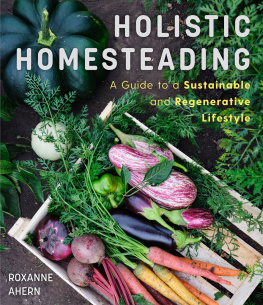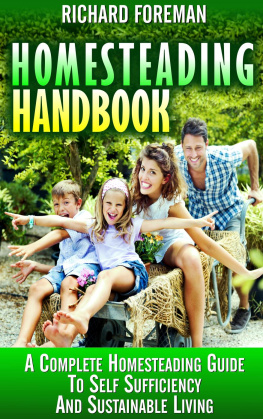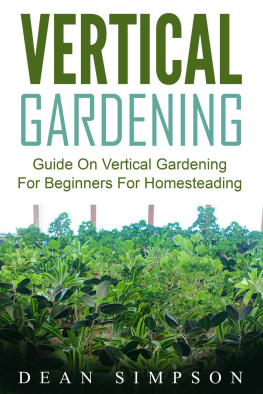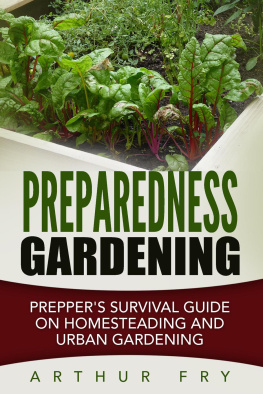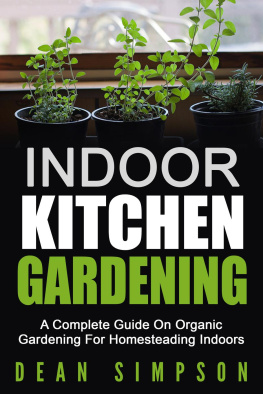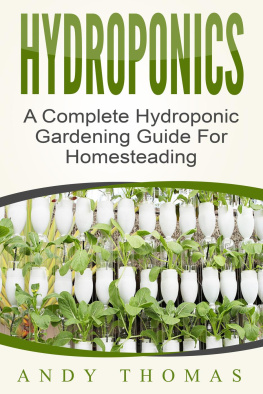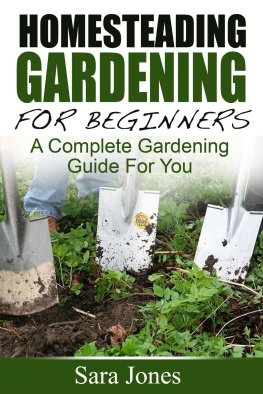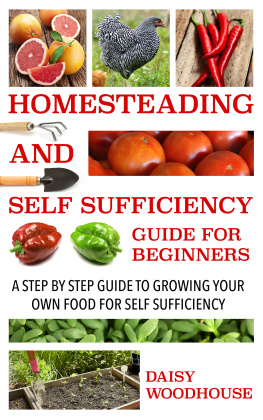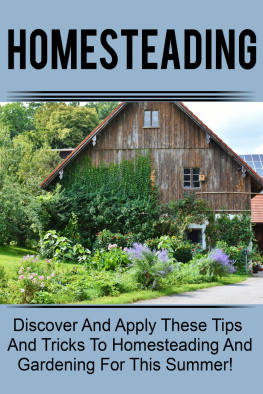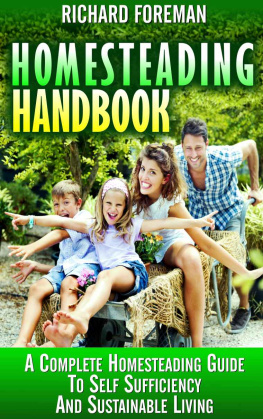Richard Anderson - Homesteading: Self Sufficiency Guide To Gardening
Here you can read online Richard Anderson - Homesteading: Self Sufficiency Guide To Gardening full text of the book (entire story) in english for free. Download pdf and epub, get meaning, cover and reviews about this ebook. year: 2013, publisher: Speedy Publishing LLC, genre: Children. Description of the work, (preface) as well as reviews are available. Best literature library LitArk.com created for fans of good reading and offers a wide selection of genres:
Romance novel
Science fiction
Adventure
Detective
Science
History
Home and family
Prose
Art
Politics
Computer
Non-fiction
Religion
Business
Children
Humor
Choose a favorite category and find really read worthwhile books. Enjoy immersion in the world of imagination, feel the emotions of the characters or learn something new for yourself, make an fascinating discovery.

- Book:Homesteading: Self Sufficiency Guide To Gardening
- Author:
- Publisher:Speedy Publishing LLC
- Genre:
- Year:2013
- Rating:3 / 5
- Favourites:Add to favourites
- Your mark:
Homesteading: Self Sufficiency Guide To Gardening: summary, description and annotation
We offer to read an annotation, description, summary or preface (depends on what the author of the book "Homesteading: Self Sufficiency Guide To Gardening" wrote himself). If you haven't found the necessary information about the book — write in the comments, we will try to find it.
Homesteading: Self Sufficiency Guide To Gardening gives the reader an insight into what exactly they need to do if they want to get into homestead gardening and learn how they can construct the garden and the best crops that they can plant. The author has gone to great lengths to explain it in terns that can easily be understood and the instructions outlined can easily be executed as well. Homesteading is not a new phenomenon as it has existed for decades in some form or other. It is just that nowadays resurgence in this practice has started as more and more individuals realize that they have to do start growing some of what they eat in a bid to save on the amount they spend every week. As it is aptly named the text acts as a self help guide to self sustaining gardening practices. In the long run it will be extremely fulfilling and beneficial. About the Author: Richard Anderson never grew up in a family that did homesteading but when he became an adult he started to learn about the various things that he could do to save money and to have food that is not filled with various pesticides. He started to do a bit of urban homesteading. As the years went on he managed to acquire a property in the country and from that point on he was able to grown even more things and even rear some animals as well. Richard is aware that the economical crisis is affecting everyone and that it is quite a challenge to have a sound budget when things are getting more expensive and the pay is not increasing. As such he chose the opportunity to introduce a book on homesteading to let others know the things that they could do to save some money and have fresh fruits and vegetables.
Richard Anderson: author's other books
Who wrote Homesteading: Self Sufficiency Guide To Gardening? Find out the surname, the name of the author of the book and a list of all author's works by series.

